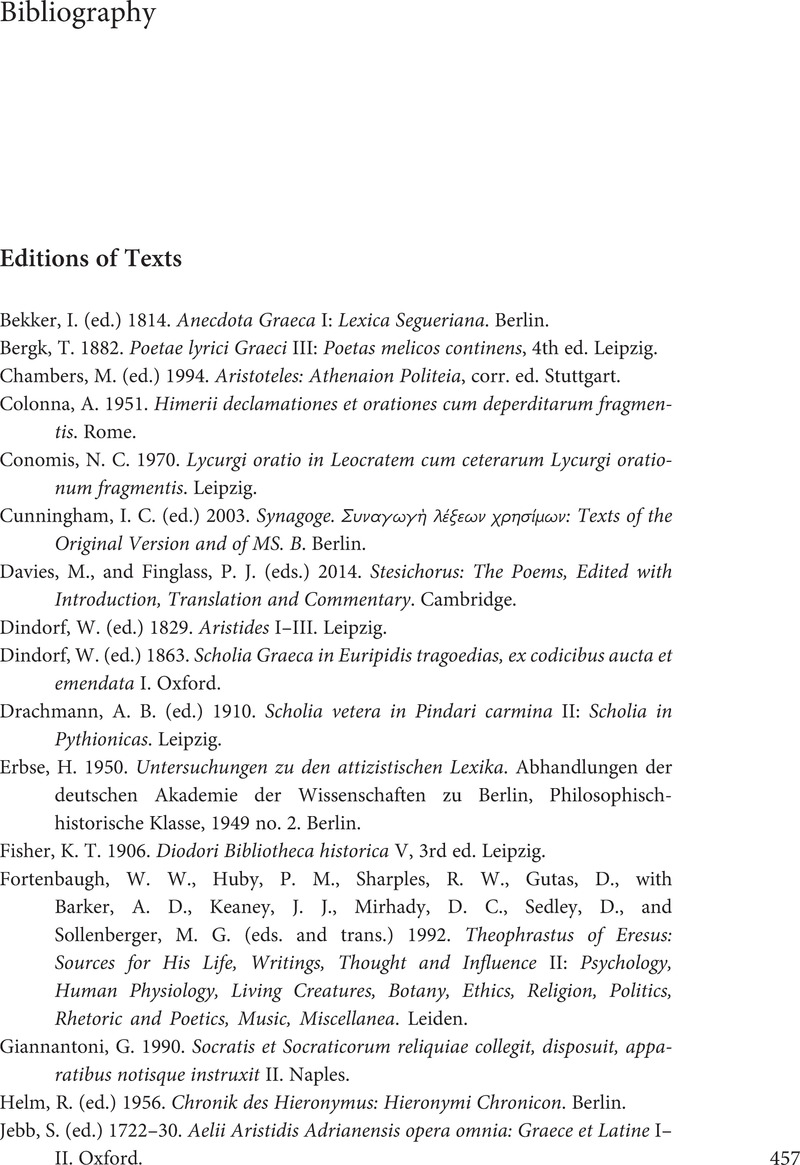Book contents
- Serving Athena
- Serving Athena
- Copyright page
- Dedication
- Contents
- Figures
- Tables
- Preface
- Abbreviations
- 1 The Panathenaia: An Introduction
- 2 Giants and Heroes: The Mythologies of the Panathenaia
- 3 The Little Panathenaia
- 4 The Great Panathenaia: Ritual and Reciprocity
- 5 The Panathenaic Games: Entertaining the Goddess
- 6 Creating Identities at the Great Panathenaia: Athenian Men
- 7 Creating Identities at the Great Panathenaia: Other Residents and Non-Residents
- 8 The City, the Goddess and the Festival
- Book part
- Tables
- Bibliography
- Index Locorum
- Index of Collections
- General Index
- References
Bibliography
Published online by Cambridge University Press: 17 April 2021
- Serving Athena
- Serving Athena
- Copyright page
- Dedication
- Contents
- Figures
- Tables
- Preface
- Abbreviations
- 1 The Panathenaia: An Introduction
- 2 Giants and Heroes: The Mythologies of the Panathenaia
- 3 The Little Panathenaia
- 4 The Great Panathenaia: Ritual and Reciprocity
- 5 The Panathenaic Games: Entertaining the Goddess
- 6 Creating Identities at the Great Panathenaia: Athenian Men
- 7 Creating Identities at the Great Panathenaia: Other Residents and Non-Residents
- 8 The City, the Goddess and the Festival
- Book part
- Tables
- Bibliography
- Index Locorum
- Index of Collections
- General Index
- References
Summary

- Type
- Chapter
- Information
- Serving AthenaThe Festival of the Panathenaia and the Construction of Athenian Identities, pp. 457 - 497Publisher: Cambridge University PressPrint publication year: 2021



